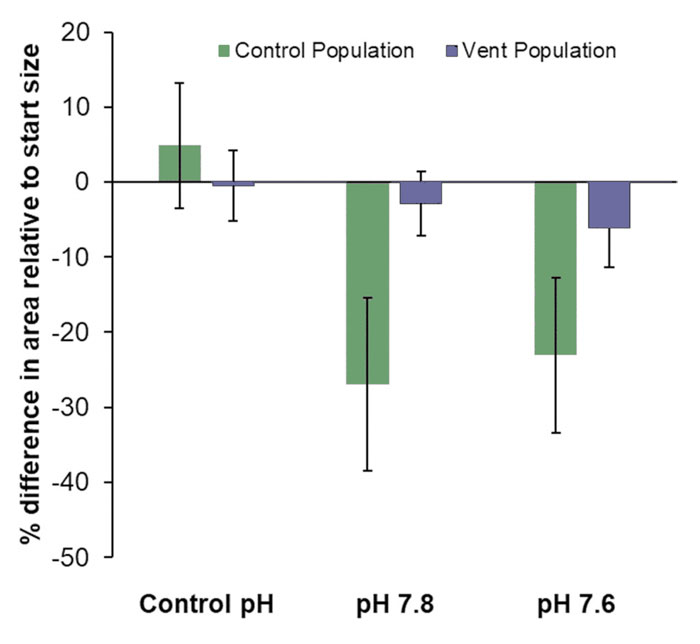| Tweet | Follow @co2science |
Paper Reviewed
Foo, S.A., Byrne, M. and Gambi, M.C. 2018. Residing at low pH matters, resilience of the egg jelly coat of sea urchins living at a CO2 vent site. Marine Biology 165: 97, Doi:10.1007/s00227-018-3359-2.
Writing as background for their study, Foo et al. (2018) note that the eggs of sea urchins are surrounded by a "jelly coat" comprised of "a polysaccharide fiber network embedded in a glycoprotein matrix that hydrates in contact with seawater," which coat helps to increase fertilization success. And since little is known about how the jelly coat of sea urchins might be impacted by so-called ocean acidification, the team of three researchers set out to investigate this subject on the urchin Arbacia lixula.
To accomplish their objective, Foo et al. collected adult specimens from two locations off the island of Ischia (Italy), the first containing normal pH waters (pH of 8.00; the control) while the second, approximately 4 km away, was near a volcanic vent (hereafter, the vent site) that reduced seawater pH to a mean of 7.69. Within hours of collection, spawning was induced and eggs from the control and vent site were immediately places into subsequent seawater pH treatments of 7.9 (control), 7.7 (reduced) or 7.5 (extreme). After jelly coat formation the researchers conducted a series of measurements to determine if there were any size differences brought about by the pH treatment differences.
The results of the experiment are summarized in the figure below and indicate that the cross-sectional area of the jelly coat around the Arbacia lixula eggs spawned from urchins inhabiting the control pH site declined as the treatment pH declined (27% and 23% decline at pH of 7.7 and 7.5, respectively, relative to pH of 7.9). In contrast, however, the size of the jelly coat was "unaffected by low pH" for eggs spawned from urchins living at the vent site. Consequently, Foo et al. conclude the fact that "the egg jelly coat of sea urchins from the vent site was robust to low pH shows intraspecific variation in this trait, and that this difference may be a maternal adaptive strategy or plastic response," adding that if this response is common, it "would facilitate the maintenance of gamete function, facilitating fertilization success in a low pH ocean."
The resilience of the egg jelly coat to reduced pH is, of course, good news for those worrying about ocean acidification. Yet the results of this study demonstrate another important truth -- that organisms have the power to adapt and to do so over a relatively short time period, as Foo et al. additionally report the venting activity causing the reduced pH site has only been in occurrence for a maximum of three decades. Unfortunately, the ability to evaluate an organism's adaptive responses is almost never factored into laboratory experiments because of time or funding constraints. But when making projections of the future existence of species, this key phenotypic response must not be ignored, yet it almost always is.

Figure 1. Effects of decreased pH on sea urchin jelly coat cross-sectional area around the eggs of Arbacia lixula from urchins resident at the control pH 8.0 (green shading) and urchins resident at the low pH vent site (blue shading). Source: Foo et al. (2018).




